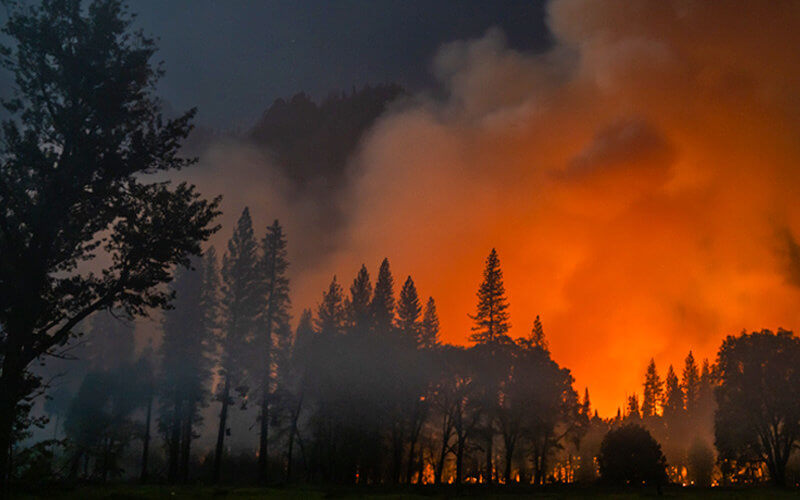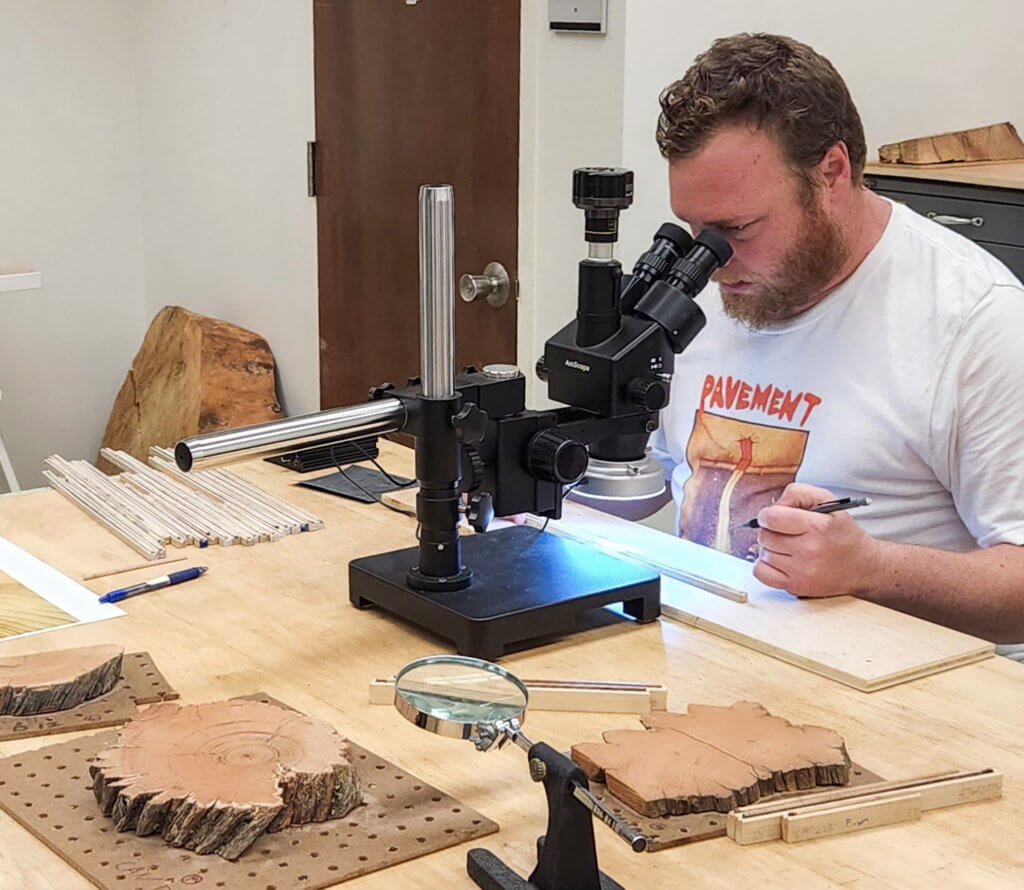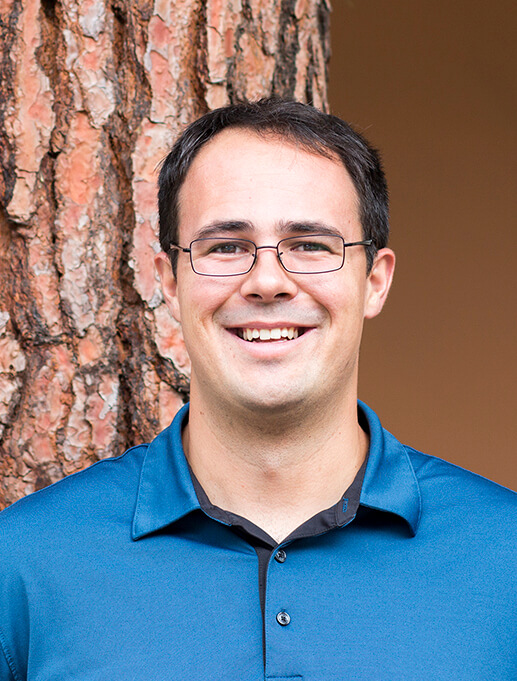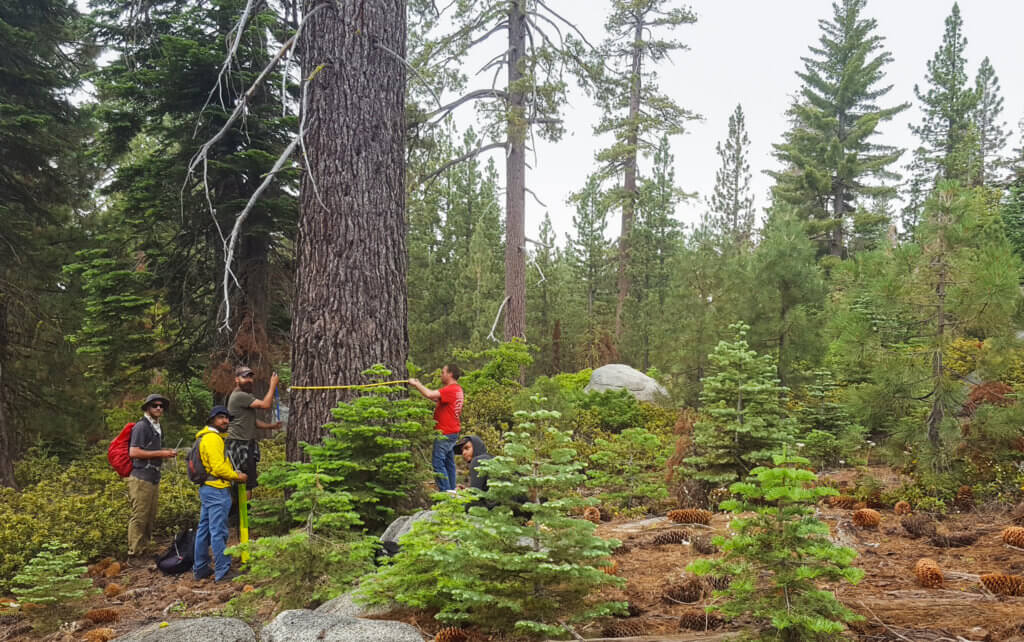
Sugar pines, the world’s largest pine, grow in Yosemite National Park, in which summer wildfires burned the parched area.
While trees in this area have evolved to withstand low-intensity but more frequent wildfires — due to hot and dry conditions and California’s worsening drought — the recent fires have been more severe. This summer’s fires in and near Yosemite scorched thousands of acres, forcing evacuations and destroying homes and structures.
To find answers on how climate change is impacting trees in the Sierra Nevada, Cal State Fullerton student geographer Daniel Swenson is investigating the influence of wildfires on the growth of sugar pines in Yosemite.

Swenson, a graduate student studying geography and the environment, hopes to shed light on how sugar pines respond and recover from past and recent fires.
“Once complete, my research will give a clearer picture on the effect of fires that have occurred in the Sierra Nevada — both in duration and intensity,” Swenson said. “This work will give us past dates of when these events did occur.”
Swenson is conducting the study for his master’s thesis under the mentorship of Trevis Matheus, associate professor of geography and the environment. In Matheus’ Cal-Dendro Tree-Ring Lab, the researchers combine field and laboratory work using dendroclimatology to understand the influence of climate on the growth of trees over hundreds to thousands of years. Dendroclimatology is the analysis of tree rings to study past and present climate.
Since ancient sequoias are protected and too large to sample using tree borers, the only way to understand the effects of current droughts and warming trends on trees in Yosemite is by analyzing the rings when one of the trees dies or is downed, Matheus explained.
Instead, the researchers are using data from sugar pines, a common pine in the area, to infer the effect the drought and warming have on the health of the entire grove.

Swenson’s study also compares how long it takes the trees to recover from fires hundreds of years ago to the recovery of trees in the last century, Matheus explained. Matheus’ research interests focus on understanding the climate of the past 1,000 to 2,000 years and its relationship to present and future climate regimes.
“Through this research, we can better understand what will happen to trees as the climate warms and add hundreds of years of climate history to our relatively short, less than 150-year instrument record,” Matheus added.
Sampling Trees for Study
Swenson is using tree samples collected in 2018 as part of Matheus’ “Mountain Field Geography” course to the Sierra Nevada, including Tuolumne Grove. He participated in the class as an undergraduate and used increment borers — a tool to extract a section of wood tissue — to sample trees for future study.
This process doesn’t harm the tree, but the samples will give a wealth of information on the effect of fires that have occurred in the Sierra Nevada.
“I am using the proxy data — information that can be utilized from an indirect source — from tree rings to glean information on the age of the trees, drought frequency and scarring on the trees,” added Swenson, who earned a bachelor’s degree in geography in 2021 at CSUF and studied climate change and physical geography.

Tree rings don’t provide as many years of data as other paleo proxy methods, such as sediment cores or ice cores. However, unlike other methods, tree-ring data reveals centurieslong weather and climate data for every year, the researchers said.
“We can look back at short periods of time in the tree-ring record when the climate was warmer and drier, and this provides us a framework of what to expect as our climate warms in the near future,” Matheus relayed.

When trees are stressed, they respond to climate by growing less, which is recorded in the rings. If it is particularly hot or dry the rings are smaller and the researchers can examine these patterns over time by measuring narrow rings on cores extracted from living and dead trees.
“Without this context, we would be limited in our understanding of drought and fires in the state,” Matheus added.
Swenson is on track to complete his study in the spring. He plans to submit his research for publication in a peer-reviewed geography journal and hopes the data contributes to better inform California’s current climate crisis.
“More specifically, this research will help us understand what human-caused climate change can do to the planet, both in the short-term and long-term,” Swenson said.
Swenson is a tutor and teaching assistant at Fullerton College, and after he graduates next year, he plans to pursue a career teaching at the community college level. Since a child, he has been interested in learning more about climate change and the environment.
“This sounds cliché, but I was raised by my parents and grandparents to respect our world and environment — and to try to leave it in a better condition than I’ve experienced,” he said.
“Today, we are at a time where extreme weather is more common, and as a society, there is a need to understand the past to know how we can help rectify what can happen in the future. Future generations deserve as much.”